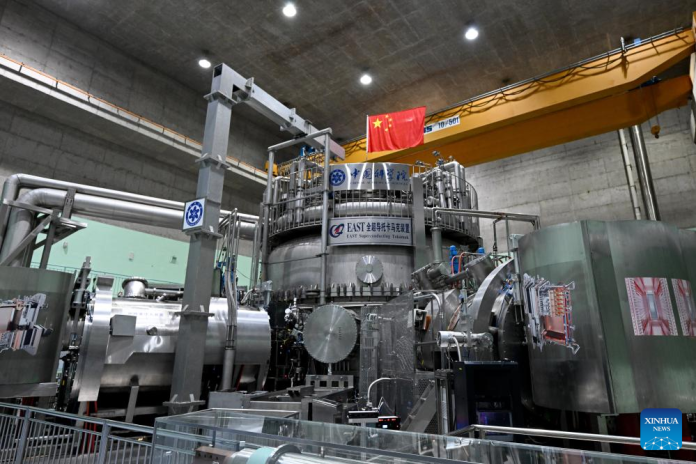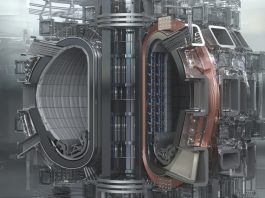China’s quest to harness the power of the stars reached a historic milestone as the Experimental Advanced Superconducting Tokamak (EAST), often called the “artificial Sun,” achieved a record-breaking high-confinement plasma operation lasting 1,066 seconds.
This feat, accomplished by the Institute of Plasma Physics under the Chinese Academy of Sciences (ASIPP), far surpasses the previous record of 403 seconds set by EAST in 2023.
This breakthrough marks a major step in fusion energy research, showcasing advancements in sustaining high-temperature plasma for prolonged periods.
The ability to maintain stable operation for over 1,000 seconds is crucial for developing future fusion reactors capable of generating continuous and clean energy.
What makes EAST unique?
EAST, the world’s first fully superconducting tokamak, boasts several innovative features. Its non-circular cross-section, fully superconducting magnets, and actively water-cooled plasma-facing components enable advanced steady-state plasma operation modes.
While it is smaller than the International Thermonuclear Experimental Reactor (ITER), EAST is comparable in shape and design, offering greater flexibility for experimental configurations.
Since its launch in 2006, EAST has served as an open test platform for scientists worldwide, fostering international collaboration in fusion energy research.
As China’s primary contribution to ITER, which is under construction in France, this artificial Sun continues to lay the groundwork for future global advancements in fusion technology.
Why fusion energy matters
Fusion energy represents the ultimate clean power source, mimicking the nuclear reactions that fuel the Sun.
Unlike fossil fuels, fusion generates no greenhouse gas emissions, producing only helium as a byproduct. Moreover, its fuel – hydrogen isotopes like deuterium and tritium – is abundant and widely available, offering a virtually limitless energy supply.
Fusion’s potential extends beyond Earth. With sufficient development, it could revolutionise space exploration by providing a lightweight and efficient power source for interstellar travel.
This transformative technology promises to address global energy challenges, reduce dependence on finite resources, and drive sustainable development on a planetary scale.
Fusion challenges
Despite decades of research, achieving practical fusion energy remains a formidable challenge.
A successful fusion reactor must sustain temperatures exceeding 100 million degrees Celsius, maintain plasma stability over extended periods, and ensure precise controllability.
EAST’s record demonstrates progress on these fronts, but scientists must still refine reactor designs and operational protocols to achieve continuous power generation.
High efficiency and long-term stability are critical for enabling self-sustaining plasma circulation. This capability is essential for commercial fusion reactors, as it ensures uninterrupted energy output.
By achieving steady-state operation at unprecedented durations, EAST brings humanity closer to this goal.
The role of EAST in global fusion research
China’s participation in the ITER project underscores its commitment to advancing fusion energy alongside international partners. China contributes approximately 9% of the project’s construction and operational responsibilities, with ASIPP leading the effort.
EAST’s success provides valuable insights for ITER and future experimental reactors, including China’s Fusion Engineering Test Reactor (CFETR).
By continuously improving operational systems – such as EAST’s heating system, which now generates double its previous power output – China is driving progress in fusion research.
In Hefei, Anhui Province, where EAST is based, new experimental fusion facilities are under construction to further accelerate fusion energy development. These efforts align with global aspirations to bring fusion energy from the realm of research to practical application.
The recent advancements achieved by EAST are not just milestones in scientific achievement but also steps toward addressing humanity’s growing energy demands.
With international collaboration and continued innovation, the dream of harnessing the power of an artificial sun may soon become a reality.









